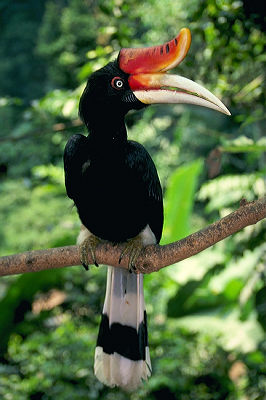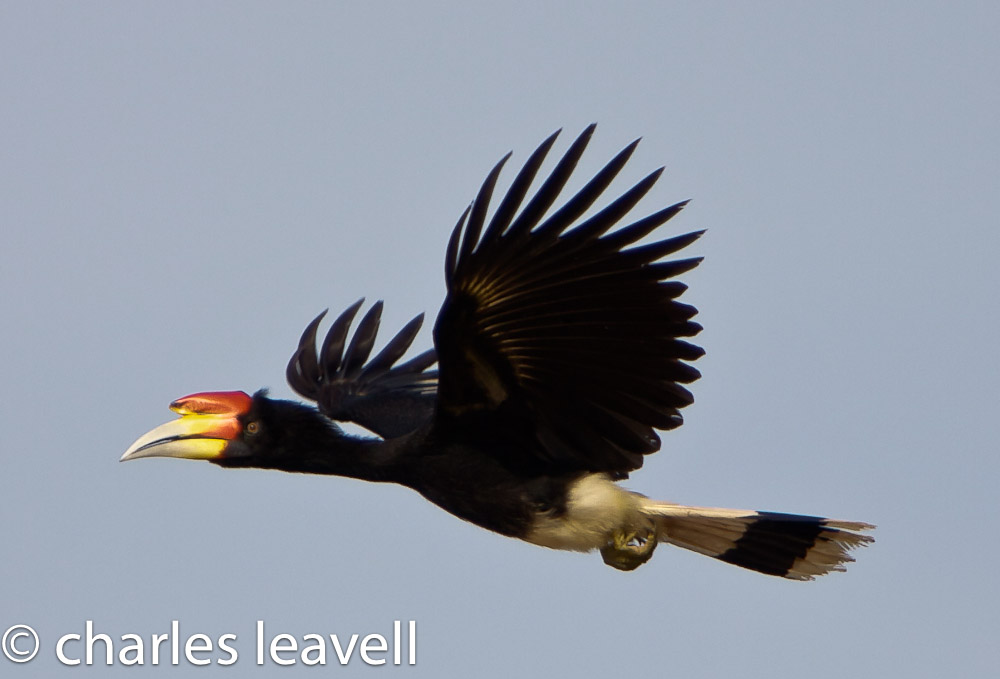

A female wild turkey weighs between 5-12 pounds.The Greater Flamingo weighs between 4.4-8.8 pounds.Males are larger than females.įor North American readers who want to compare the size of a Rhinoceros Hornbill to birds they are more familiar with, here are some comparisons: They can weigh up to 7.5 pounds and are often 3 feet long. Watch this informative video to learn more about the differences between these two birds. The Rhinoceros Hornbill also has a yellow and red casque, but the Great Hornbill’s casque is just yellow.The casque of the Rhinoceros Hornbill protrudes upward, as opposed to the Great Hornbill’s casque, which is flatter against the bill.Both birds have very similar tails: long and white with a thick black bar near the base of the tail.The Great Hornbill’s wings have a white and yellow stripe, but the Rhinoceros Hornbill’s wings are solid black.Note that the Great Hornbill has a whitish neck, whereas the Rhinoceros Hornbill’s neck is all black.Although they both have large casques, they are quite easy to tell apart. The Rhinoceros Hornbill and Great Hornbill have some overlapping territory, including Thailand. There are several kinds of hornbills in the world.

#Rhinoceros hornbill eating fig how to#
How To Tell the Difference Between the Rhinoceros Hornbill and the Great Hornbill
Some naturalists have observed that the casque may serve as a steadying support as they lean against a tree and break off large pieces of bark – or as they dig around in the dirt for insects. The casque amplifies the bird’s calls and songs, helping them to more effectively protect their territory. Both sexes have a casque, which may be used to attract a mate. Heavy deforestation in their forest habitat has led them to be uplisted from near threatened to endangered on the IUCN Red List in 2018.Note that unusual-looking horn that extends from the top of its bill – that is the casque. Wrinkled hornbills were first bred in captivity in 1988. After several months, when the chicks are ready, the female will break out of her nest. They are fed exclusively by the male, who regurgitates food for them. They use holes found in trees for nests, and the female will plaster over the entrance with mud and droppings, leaving a nesting mother and her chicks only a small hole, too small for them to exit. These birds are monogamous and remain in a pair for life. Their call is a harsh "Kak-kak," or a deep "Row-wow" which can be heard for miles. Wrinkled hornbills do not drink, but get the water they need from their food. This is a forest species and eats mainly fruit, such as figs, although it will also eat small animals such as frogs and insects. The bill and casque of the female is almost entirely yellow. The bill of the male is yellow with a red base and casque, and a brownish basal half of the lower mandible. Males have bright yellow feathers on the auriculars, cheeks, throat, neck-sides and chest, but these areas are black in the female, except for the blue throat. The male and female have different head and bill patterns. 
It has mainly black plumage, a blue eye-ring, and a broadly white or rufous-tipped tail. The wrinkled hornbill is around 70 cm long, and has a very large bill that is fused to the skull. The wrinkled hornbill or Sunda wrinkled hornbill ( Rhabdotorrhinus corrugatus ) is a medium-large hornbill which is found in forest in the Thai-Malay Peninsula, Sumatra and Borneo.







 0 kommentar(er)
0 kommentar(er)
